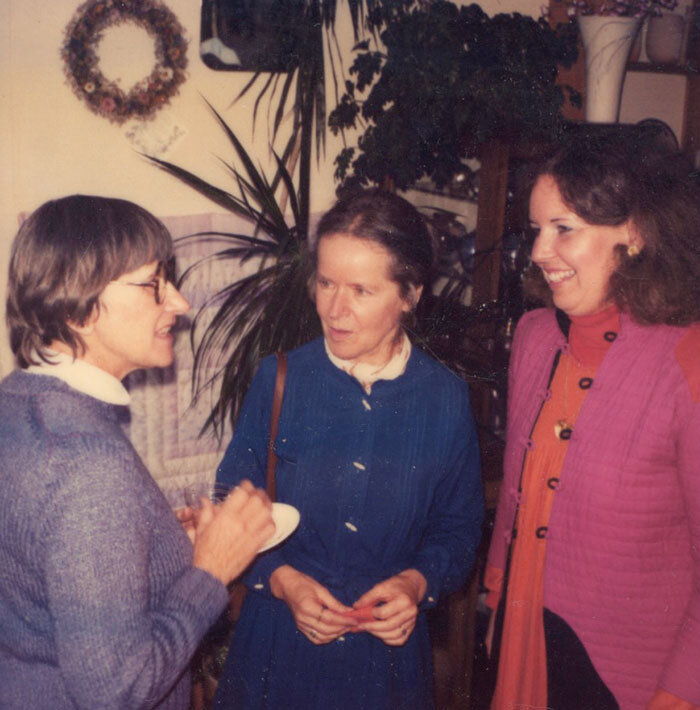About Corita Kent
Frances Elizabeth Kent was born in 1918, taking the name Sister Mary Corita upon entering the Sisters of the Immaculate Heart, a Roman Catholic order based in Southern California. The Sisters were highly educated and known for their intellectual rigor, teaching both in the diocese’s schools as well as at Immaculate Heart College in Los Angeles. As a young sister, Corita taught at Immaculate Heart College while getting her master’s degree at University of Southern California. Eventually, she was appointed to the Chair of the IHC Art Department in 1964.
The Sisters were a progressive order, open to the rapid social, political, and religious changes of the times. The art department, in particular, was a thought leader, inviting avant-garde artists and designers such as Charles & Ray Eames, Buckminster Fuller, and John Cage into the classroom. Eventually, Corita’s teachings and her own artwork were deemed too radical by the Archdiocese of Los Angeles, creating a constant source of friction, ultimately resulting in her leaving the order in 1968.
Corita developed her signature style during the early days of the Pop Art movement. As with other artists like Andy Warhol and Roy Lichtenstein, she made reference to popular culture in her work–from General Mills cereal to Wonder Bread and gas stations — at the same time including biblical sources and children’s literature, references to the Civil Rights and anti-war movements, as well as the celebration of the simple pleasures of life. In contrast to her Pop Art peers, Corita found a way to bridge the sacred, the quotidian and the poetic, resulting in work that is inflected by Pop, but truly her own.
Elinor Mikulka, Corita Kent, Mickey Myers
Corita Kent, Teresa Myers, Mickey Myers
Rear: Beth Bagnall, Bill Bagnall, Mickey Myers; Front: Annette Laporte, Corita Kent
The last picture of Corita Kent and Mickey Myers taken together
About Mickey Myers
Corita and her artwork have had a profound impact on my life — she was my teacher, mentor, and life-long friend — so I am thrilled to share my collection with you.
I first met Corita when I was 9 years old. My father, a classical music producer at Capitol Records in Hollywood, had invited Corita to create an album cover. Our family attended the recording session at UCLA’s Royce Hall, the same day that Corita attended. I saw a diminutive figure in a nun’s habit rapidly approach me from the back of the auditorium. She introduced herself as Sister Corita, kissed me on the cheek, and thus began our friendship. When I asked her about this meeting decades later, she said, “We were the same size, and I figured you were as nervous as I was to be there.”
I studied art with Corita at Immaculate Heart College from 1962 to 1966, eventually moving to Boston after graduation. After Corita left the order in 1968, she also moved to Boston. We worked together on several projects during the following 18 years. At her death, she appointed me Artistic Executor of her Estate. (“You’ll make all the decisions,” is what she said to me.)
Corita Kent, Passing Through the Red See: Self-Portrait, 1976, watercolor
“The groundwork doesn’t show till one day.”
– Corita Kent




